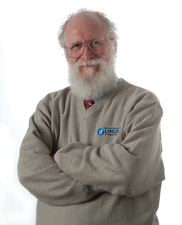Programming experience pays off
Problem Solver

"maddog" celebrates 46 years of writing code and considers what it means to be a professional programmer.
By the time you read this, I will have celebrated the 65th anniversary of my birth. I started programming in 1969, so this year makes 46 years of writing code. Many people ask me if I still write code, and I do, but mostly for my own use rather than the use of others. Of course, I also administer the computers that I use in my office and home – partly to keep up to date with things happening in the FOSS world, and partly because I enjoy it.
When I started programming, many computers were still using vacuum tubes to do the calculations, and I remember both programming a "computer" using a plug board and wires as well as building a controller for a wire-making machine out of relays. Later, core memory replaced vacuum tubes and relays for memory, and still later integrated circuits replaced core memory for power, space, cost, and heat considerations.
Recently, the BBC announced their newest design for the micro:bit – a computer that is only 4cm x 5cm and runs off batteries. The computer is so inexpensive to make that the plan is simply to give one to every seventh grader. They can then program the device through a website and download the program to the micro:bit. The intent of this initiative is not to generate millions of "professional" programmers but to help students learn how to program and (perhaps) organize their thoughts and problems so that a programmer can more easily solve the problem later. Or, perhaps the students will learn enough about simple problem-solving techniques to solve problems themselves, just as they learn to use electronic calculators and spreadsheets.
[...]
Buy this article as PDF
(incl. VAT)
Buy Linux Magazine
Subscribe to our Linux Newsletters
Find Linux and Open Source Jobs
Subscribe to our ADMIN Newsletters
Support Our Work
Linux Magazine content is made possible with support from readers like you. Please consider contributing when you’ve found an article to be beneficial.

News
-
Mozilla Plans to AI-ify Firefox
With a new CEO in control, Mozilla is doubling down on a strategy of trust, all the while leaning into AI.
-
Gnome Says No to AI-Generated Extensions
If you're a developer wanting to create a new Gnome extension, you'd best set aside that AI code generator, because the extension team will have none of that.
-
Parrot OS Switches to KDE Plasma Desktop
Yet another distro is making the move to the KDE Plasma desktop.
-
TUXEDO Announces Gemini 17
TUXEDO Computers has released the fourth generation of its Gemini laptop with plenty of updates.
-
Two New Distros Adopt Enlightenment
MX Moksha and AV Linux 25 join ranks with Bodhi Linux and embrace the Enlightenment desktop.
-
Solus Linux 4.8 Removes Python 2
Solus Linux 4.8 has been released with the latest Linux kernel, updated desktops, and a key removal.
-
Zorin OS 18 Hits over a Million Downloads
If you doubt Linux isn't gaining popularity, you only have to look at Zorin OS's download numbers.
-
TUXEDO Computers Scraps Snapdragon X1E-Based Laptop
Due to issues with a Snapdragon CPU, TUXEDO Computers has cancelled its plans to release a laptop based on this elite hardware.
-
Debian Unleashes Debian Libre Live
Debian Libre Live keeps your machine free of proprietary software.
-
Valve Announces Pending Release of Steam Machine
Shout it to the heavens: Steam Machine, powered by Linux, is set to arrive in 2026.

